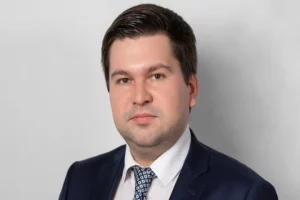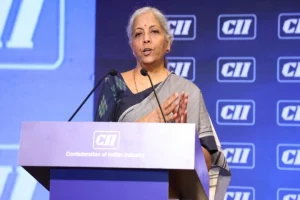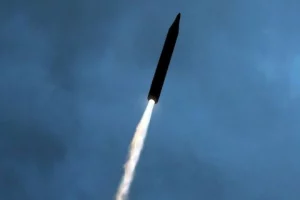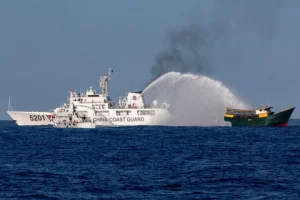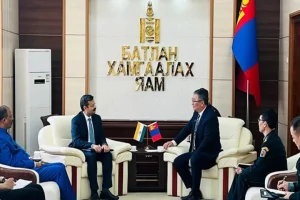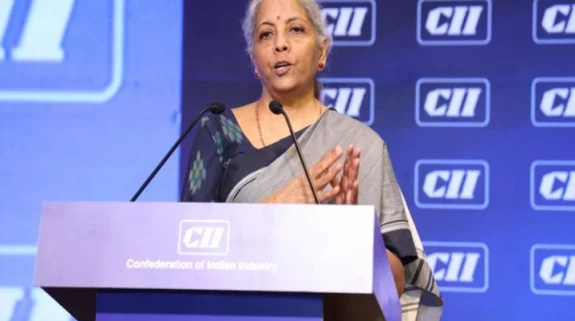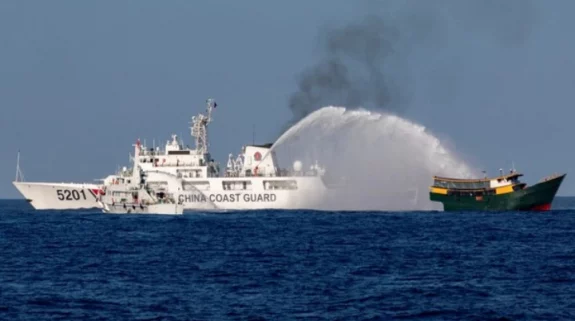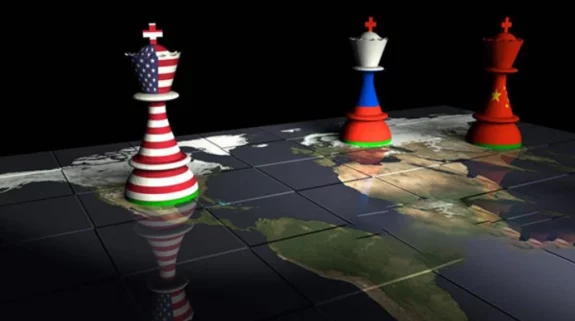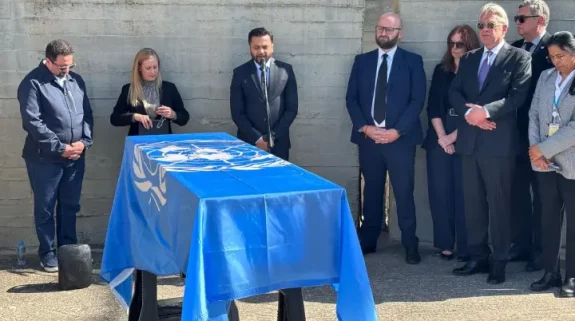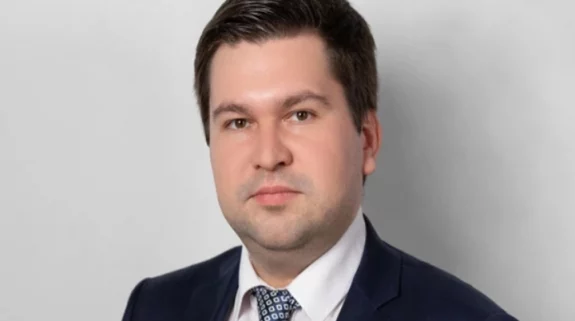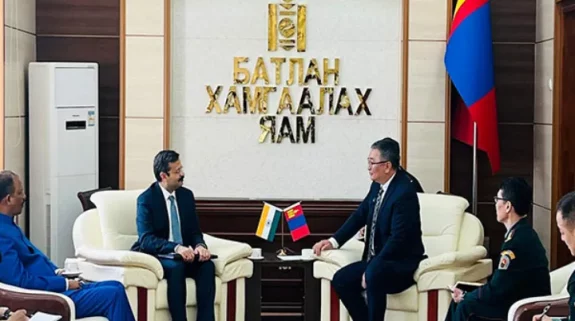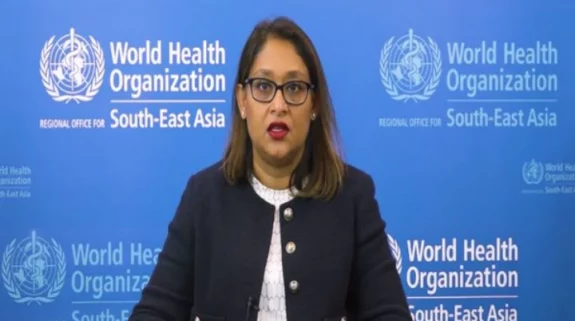On 14 February 2019, Adil Ahmad Dar (18) had killed 40 Central Reserve Police Personnel (CRPF) in an unprecedented car bomb explosion when he targeted a paramilitary convoy at Lethapora, 20 km from Srinagar, on the Srinagar-Jammu national highway.
According to the voluminous chargesheet against 19 persons—12 Kashmiris and seven Pakistani nationals—a 200-kg improvised explosive device (IED) was fabricated in Kashmir by the militants of Maulana Masood Azhar’s ‘Jaish-e-Mohammad’ (JeM) while the organisation’s clerics were addressing cadres on ‘Kashmir Solidarity Day’ at Bahawalpur in Pakistan. In advance of the fidayeen attack, a video clip was also created on behalf of the little educated teenage bomber with voice-over of a well-qualified militant to influence the young Kashmiri minds on the path of violence.
Mohammad Umar Farooq (24), according to the NIA chargesheet, played a key role in the melodramatic episode that brought India and Pakistan to the brink of war. One of the sons of the IC-814 hijacker Ibrahim Athar and nephew of the JeM founder Masood Azhar, Umar had taken meticulous training in guerrilla warfare, particularly in fabricating IEDs, in the year 2016-17 in Afghanistan. Athar, facing Interpol’s red corner notice, has been supervising JeM’s camp in liaison with Al-Qaeda, Taliban and Haqqani Network in Helmand province of Afghanistan.
Umar was one among the 60 Pakistani terrorists who infiltrated through the International Border in Jammu’s Samba-Kathua belt from 1 July 2017 to 31 January 2020 when a truck, driven by Adil Dar’s cousin Sameer Dar, was found carrying three heavily armed infiltrators from Jammu to Srinagar. All the three JeM militants coming in from Pakistan were killed in the encounter near the Bann Toll Plaza at Nagrota.
On his arrival in Kashmir in April 2018, Umar was appointed as JeM’s ‘commander’ for the areas falling on the right side of the river Jhelum in the South—Pulwama, Shopian and Kulgam districts. For most of the time, he used to stay at the house of one Peer Tariq Ahmad Shah at Hakripora, Pulwama. Fellow Pakistani militants Kamran Ali, Ismael alias Saifullah and Qari Yasir, besides the local cadres Sameer Ahmad Dar and Adil Ahmad Dar, were chosen as the key characters of the explosion that would “shake India”.
6 February 2019—the day after the ‘Kashmir Solidarity Day’ celebrations across Pakistan—was chosen as the day of the suicide attack on a paramilitary convoy on the Srinagar-Jammu highway. Local facilitator, Shakir Bashir of Hajibal, who owned and operated a furniture shop at Lethapora, identified the “best spot”, one ascending furlong short of a CRPF camp on the highway.
In the last week of January 2019, Umar and his associates stayed at Tariq Shah’s house at Hakripora. The NIA has plenty of videos and photographs of Umar with Shah’s 22-year-old daughter, Insha Jan. In one photograph, Insha, sitting beside Umar, has a pistol in one hand and three rifles in another.
Adil Dar, a school dropout and a labourer before joining JeM, was prepared for carrying out the strike. A local facilitator, Sajad Ahmad Bhat of Mirhama, acquired a blue Maruti Eco, JK03-1886, for Rs 1,70,000. It was kept at Shakir’s home in Haijbal.
Under instructions from JeM’s Markaz Usman-o-Ali in Bahawalpur, Umar and his associates began preparing the video at Tariq Shah’s home at Hakripora on 27 January 2019. Adil, a school dropout, read out the script in his flawed Urdu. Voice of Sameer Dar, a postgraduate in zoology with good hold on Urdu, was dubbed on it. It took Adil and Sameer two days of rehearsal on the script received from Bahawalpur until the final cut was shot on Umar’s Samsung S9 cellphone on 29 January. “By the time this video will reach you, I will be enjoying in Jannat”, was its beginning.
Ready on 29 January, the video clip was submitted through Umar’s WhatsApp to Bahawalpur where JeM’s media head and Masood Azhar’s brother, Mohammad Ammaar Alvi, got it professionally made with special audio and video effects. However, it was not forwarded to the organisation’s spokesperson Mohammad Hussain in Pakistan-occupied Kashmir (PoK) until Adil actually departed for the suicide mission on 14 February 2019.
As per the plan, Umar, Sameer and Adil gathered at Shakir Bashir’s home on 5 February. Shakir himself drove Umar from Hakripora to Hajibal, half-a-km from the chosen spot of the strike across the Jhelum. For several hours, Umar and his associates kept watching fiery addresses of Masood Azhar and his brother, Abdul Rauf Asgar Alvi, to the organisation’s enthusiastic cadres at Markaz Usman-o-Ali in Bahawalpur. Simultaneously, they fabricated the massive 200-kg IED which was fitted into the blue color car.
However, on the given day of 6 February, Srinagar-Jammu highway remained blocked for traffic due to snowfall and consequently no paramilitary convoys operated.
From 5 February to 14 February, Umar, Adil and Sameer stayed at Shakir’s home. On 14 February, Shakir spotted the vehicular movement on the highway. He conducted a recce and went back from his furniture shop to his home across the river at 2.00 pm. After Umar informed the JeM headquarters in Pakistan that Adil was about to carry out the mission, Shakir drove the suicide bomber to Lethapora. After negotiating the bridge, Shakir put Adil behind the steering wheel and went down.
Taking a U-turn, Adil reached the highway without any resistance as there were no road opening party personnel on that spot. He drove along the CRPF convoy for about 400 metres, apparently in search of a fully packed bus. It was the 6th vehicle from the front of the convoy that he chose and hit with a deafening explosion. Forty personnel were killed. Adil was blown into pieces. Umar immediately conveyed to the JeM headquarters that the mission had been accomplished.
In just three minutes of the explosion, Hussain from JeM’s PoK camp communicated to the media that his organisation had carried out the strike and killed “a large number of military soldiers and officers”.
With the help of the Computer Emergency Response Team (CERT-In), the NIA learned that Srinagar-based Global News Service (GNS) was one of the receivers of Hussain’s WhatsApp message.
Within minutes of the strike, Adil’s video was released to the media by Hussain from PoK. It went viral in just 10-15 minutes as it was for the first time after January 2018 that a Kashmiri suicide bomber claimed responsibility of an attack. On 1 January 2018, five CRPF personnel had been killed in a sneak attack on their camp at Lethapora. Nineteen-year-old Fardeen Ahmad Khanday, the son of a J&K Police official from Tral, was found dead among the three JeM militants killed in the operation. That time too, JeM in Pakistan had released Khanday’s eight-minute video, calling the fellow Kashmiris to wage Jihad against India.
Much of the electronic evidence, including metadata of the deleted videos and images, was recovered by the NIA from Umar’s phone after he, along with Kamran, was killed in an encounter by J&K Police and security forces on 29 March 2019 at Suthsoo Kalaan, Nowgam, on the outskirts of Srinagar.
The NIA has appreciated the support provided by CERT-In and some foreign agencies and companies, including FBI, in retrieving crucial data and evidences from the phones used by Omar and his masters in Pakistan..






